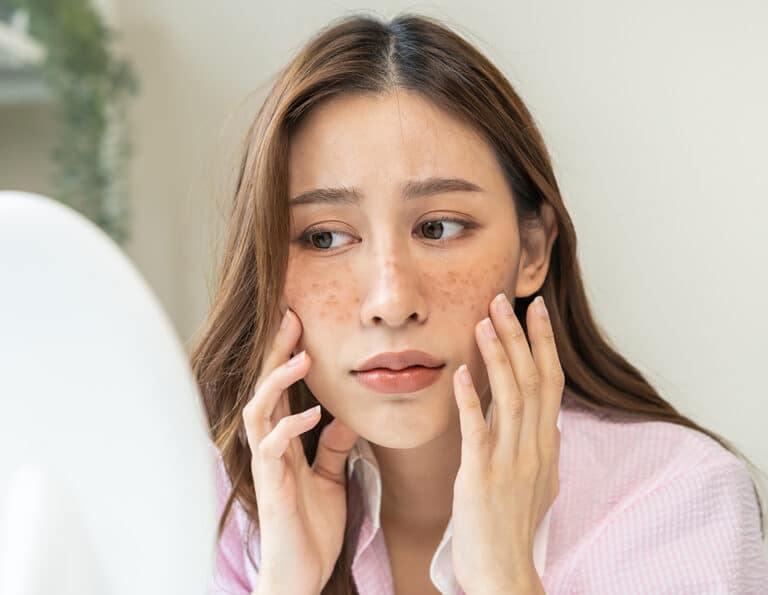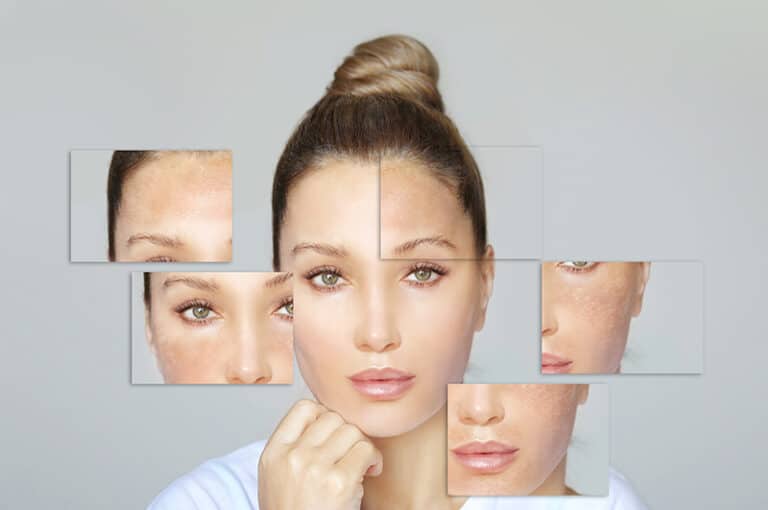Related Services

Understanding Pigmentation and Melasma
Reveal Clear, Even-Toned Skin
Abnormal Variations in Skin Color
Hypopigmentation
Hypopigmentation results in lighter patches of skin due to a reduction in melanin production. Causes may include skin injuries, certain medicines such as prolonged use of topical steroids, certain medical conditions (like vitiligo), and genetic predisposition. These patches are usually stable and can be more noticeable on darker skin.
Hyperpigmentation
Hyperpigmentation occurs when certain areas of the skin become darker than the surrounding skin. Common causes include sun exposure, hormonal changes (e.g., pregnancy), high cortisol levels, and certain medications. Distinguishing factors include well-defined dark patches that may vary in size and are often found on sun-exposed areas.
Melasma
Melasma is a form of hyperpigmentation characterized by brown patches, especially on the face. It’s primarily linked to hormonal changes (hyperlink to hormone balancing), such as those experienced during pregnancy or with contraceptive use. Typically symmetrical, melasma often responds well to specific treatments aimed at pigmentation.
Rosacea
Rosacea is a chronic skin condition that results in facial redness, visible blood vessels, and sometimes acne-like bumps. It primarily affects those with fair skin and may be triggered sensitivity to certain foods or environmental factors. It is distinguished by frequent flushing and persistent redness.
Sun Spots
Sun spots are small, flat, brown spots on the skin resulting from prolonged sun exposure, often developing in older adults. They are harmless but can be mistaken for other skin conditions and occur primarily on sun-exposed areas.
Skincare Routine Recommendations
Normal Variations in Color
Type I
Very fair skin, always burns, never tans.
Type II
Fair skin, burns easily, tans minimally.
Type III
Medium skin, burns moderately, tans gradually.
Type IV
Olive skin, rarely burns, tans easily.
Type V
Brown skin, very rarely burns, tans very easily.
Type VI
Dark brown or black skin, never burns, deeply pigmented.

Topical Treatments Utilized at Elevate Wellness and Medspa
Hydroquinone
A skin-lightening agent that helps reduce the appearance of dark spots.
Retinoids
Promote cell turnover and improve skin texture, helping to fade pigment.
Vitamin C
An antioxidant that lightens hyperpigmented areas and evens skin tone.
Azelaic Acid
Helps with hyperpigmentation and redness, particularly effective in treating rosacea.
Niacinamide
A form of Vitamin B3 that helps reduce the appearance of dark spots and improves skin barrier function.

